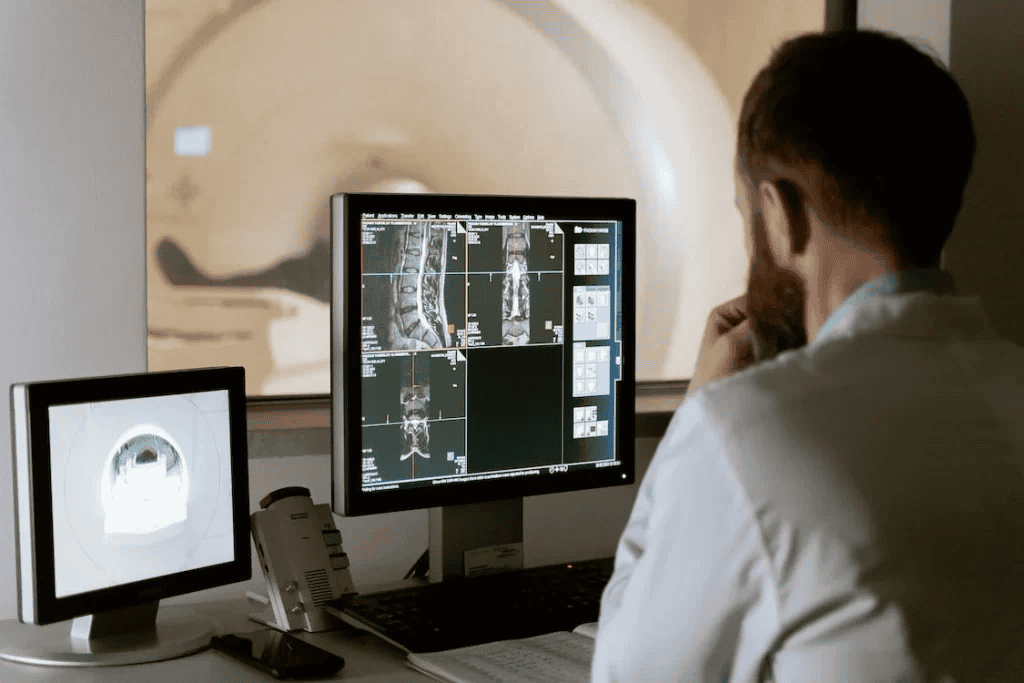Everything to Know About Developing Health Information Exchange (HIE) Software
- September 22, 2022
- Posted by: Chaitali Avadhani
- Category: Custom Healthcare Software Development

The demand for health information exchange (HIE) across healthcare organizations is high, as it allows nurses, doctors, pharmacists, and other healthcare staff to share and access patients’ data securely. HIE also improves the quality, speed, cost, and safety of patient care.
According to a report published in 2019, 32 percent of the individuals who went to a doctor from past 12 months experienced a gap in information exchange. This imbalance resulted in poor medical care.
Developing a health information exchange software can be a plausible solution to overcome this gap. HIE software can result in boosting interoperability by allowing smooth exchange of healthcare data amongst medical staff and patients.
Key Benefits of Health Information Exchange Software
1. Prevent Readmissions
Integration of health information exchange software can reduce the number of hospital readmission rates and ED (Emergency Department) visits.
A research was conducted by HEALTHeLINK, Western New York’s regional HIE, in coordination with a researcher at University of Connecticut and Brookings Institution’s Center for Technology Innovation. This research analyzed whether integration of HIE system in medical practice workflow impacts ED visits and unplanned readmission rates amongst patients.
The research concluded that that the rate of unplanned readmissions decreased by 10.2 percent and ED reduced by 13.3 percent. From this case study, it’s safe to say that implementation of HIE software in practice workflow can significantly augment patient care.
2. Provide Value-Based Care
Health information exchange software can help medical facilities achieve the aim of value-based care – bettering care for patients, ameliorating health management strategies, and decreasing overall healthcare expenses.
Electronic health information exchange allows standardization of medical data. Standardized data seamlessly integrates with EHR software, thereby improving care.
HIE software allows healthcare providers to have access to accurate medical information through EHR (Electronic Health Records), which helps in better diagnosis and treatment. Further, providers can easily monitor and generate a list of seriously ill patients (heart or cancer patients) through HIE and keep an eye on their care.
HIE software offers complete view of diagnostic test results, thereby eliminating redundancy and patient discomfort. HIE software can also help providers in planning recovery plans, changes in medication, and more due to access to medical data.
3. Avoid Medical Errors
Healthcare information exchange software not only keeps a record of patients’ medical history, but automatically checks for issues, when a new medication is prescribed.
In case of a medical error, healthcare provider is immediately alerted through a HIE software, which results in enhancing patients’ safety and treatment procedures.
The software can highlight patient safety problems, and avert medical errors that may lead to serious consequences. Robust HIE software helps to detect and correct any operational issues, which otherwise in a paper-based setup takes up time and energy in identifying these problems.
4. Reduce Duplicate Testing
The American Health Information Management Association reported, that a typical hospital experiences 10 percent duplication rate.
Duplicate testing and records occur due to human errors, change in data, lack of data organization, and absence of enough patient information. It leads to money loss in the form of hidden expenses, and retake of an entire batch of tests all over again, resulting in wastage of time, money, resources, and energy.
These risks of duplication of testing and medical records can be avoided by incorporating health information exchange software, as it provides access to accurate medical data.
Notable Features of Health Information Exchange Software
1. Medical Data Exchange
As per the CMS (Center for Medicare and Medicaid Services), data sharing or exchange can help drive better care, by improved decision-making for healthcare providers and patients.
Further, data exchange feature decreases administrative burden such as claims payments, PAs, and claims submissions. Medical or clinical data exchange makes it easier for patients to review patient information in a timely manner.
Additionally, it can facilitate care management strategies for patients to help them make informed health decisions.
2. Clinical Data Access
This feature allows healthcare providers and patients to gain access to clinical data. This helps providers to be better informed about patient care and treatment.
Data access is anticipated to improve patient healthcare experience, as it improves their understanding of diagnosis, treatment, and side effects (if any). Data reassures patients of their treatment goals and averts confusions on their medications.
Gaining access to clinical data, enhances communication between providers and patients, thus improving standard of care.
3. HIPAA Compliance
HIE allows sharing of ePHI (Protected Health Information) amongst more than two entities, hence there’s a need for HIPAA (Health Insurance Portability and Accountability Act) compliance for HIE software.
Health information exchange software is required to adhere to HIPAA safeguards – physical, administrative, and technical, and this helps to protect sensitive ePHI from cyber attacks or data breaches.
Failure to maintain compliance leads to penalties and criminal charges, which is harmful for healthcare organizations’ overall reputation and loss of patients’ trust on organization.
Health Information Exchange Software Development Challenges
Assuring security and privacy during data exchange is crucial, therefore organizations are required to follow state and federal regulations to provide security. However, lack of standards in health information exchange can result in privacy concerns. Hence, it must adhere to certain standards if data is transferred to EHRs, such as HIPAA compliance.
Apart from this, one of the biggest challenges in health information exchange is to gain authorization of patients to exchange information through varied healthcare and technology platforms. Lack of authorization results in legal risks, which healthcare organizations should seek to avoid.
